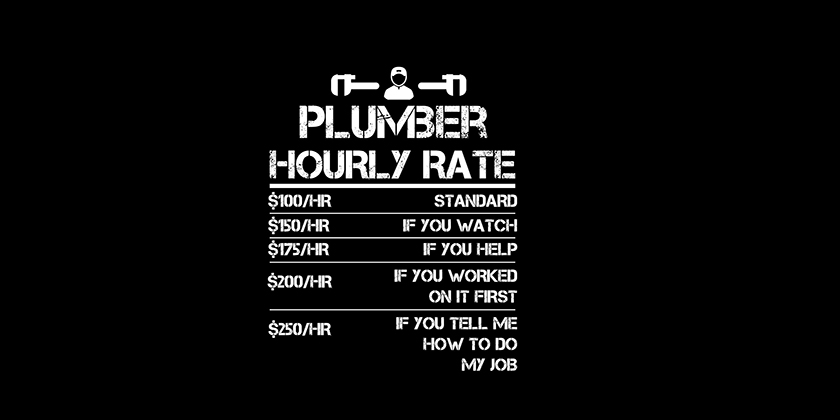
Published in The Business News on August 13th, 2022
Have you ever seen those social media posts about plumbers and rates? The one where it shows the rate is $100, but if you watch it’s $125 and if you help it’s $200. I see that one a lot, but I know a lot of plumbers. The purpose of that post is to say, “I know what I’m doing and your attempt to be involved (and save a few dollars) is a hinderance on my skills. Hence the higher rate.”
IT is like that too. There is always something that someone thinks that they can do to reduce their costs. That’s what it’s all about, isn’t it? How can I make this cheaper? The simple answer is that you can make it cheaper by making a plan, sticking to your plan and outsourcing the things that you don’t know how to do. It costs what it costs, but your efforts to reduce those costs are actually going to make it more expensive, and way more stressful.
You Don’t Want Cheap
Let’s start with the “make it cheaper” mentality. You don’t want cheap, you want value. We all want to feel like the money we spent was worth it and that we spent our hard-earned dollar wisely. Lower quality products aren’t value. They will not provide for the goal that you are looking to accomplish unless your goal is temporary. Less expensive service is not value. In many cases, less expensive service means less experience, poor management, and the expectation of a poor result. You are better off spending nothing, rather than signing on for garbage products and incompetent service.
Show of hands: how many of you paid to have a long-term plan created, only to abandon that plan in the first six-months? One…two…that guy in the back looks unsure, we’ll call that three. Why did you abandon the plan? Probably because it was a big change from what you were doing, and change is uncomfortable.
If you hired someone to make a plan and then you didn’t follow it, you are wasting your time and money. You have to be prepared to change. Focus on doing things right, not doing things cheap. Prioritize and execute. If success was easy, everyone would be doing it.
“How We Use Technology”
With technology, we have to consider how we use technology, not what technology we are using. Seems like two ways of saying the same thing, but it’s not. One is intentional, the other is happenstance. Do you have a server? Why? Because some IT guy told you to? You inherited it when you bought the business? Do you understand how that server brings your business value?
The average server replacement, for a mid-sized business is about $20,000. That’s a lot of money for something that you don’t understand. Be intentional and ask for justification. How is this server going to bring value to my business. What are my options? Most companies have servers for one these reasons:
1. Domain Control (employee accounts, security, process automation)
2. File storage and print
3. Applications
All three of those have cloud options. Many software packages are now available in the cloud, which is just a fancy, IT way of saying on the Internet. The cloud is literally just another computer or server, available to you over the Internet. Most of those cloud-based software packages are available with monthly SaaS pricing.
SaaS stands for Software as a Service. Instead of buying a major software package for $200,000+, you use it as a service for a couple grand a month. Less up-front cash and no need for a server.
Domain Control and File/Print are all available through Microsoft 365, with Azure. Again, this is SaaS based pricing, so you don’t have the cash hit of a server.
Start With Value
That’s just one option. How many other things do you have bumping around your office or facility, that are just there because that’s the way it’s always been and you have no real plan to change? You don’t know if these things add value or not, so you look to make the maintenance or replacement of these things cheap. Then the cheap solution that you put in place, doesn’t work…because it’s cheap.
Start with value. Start with your business. How are we using technology, not what technology are we using. Then plan for quality solutions that support your goals. Simple.
